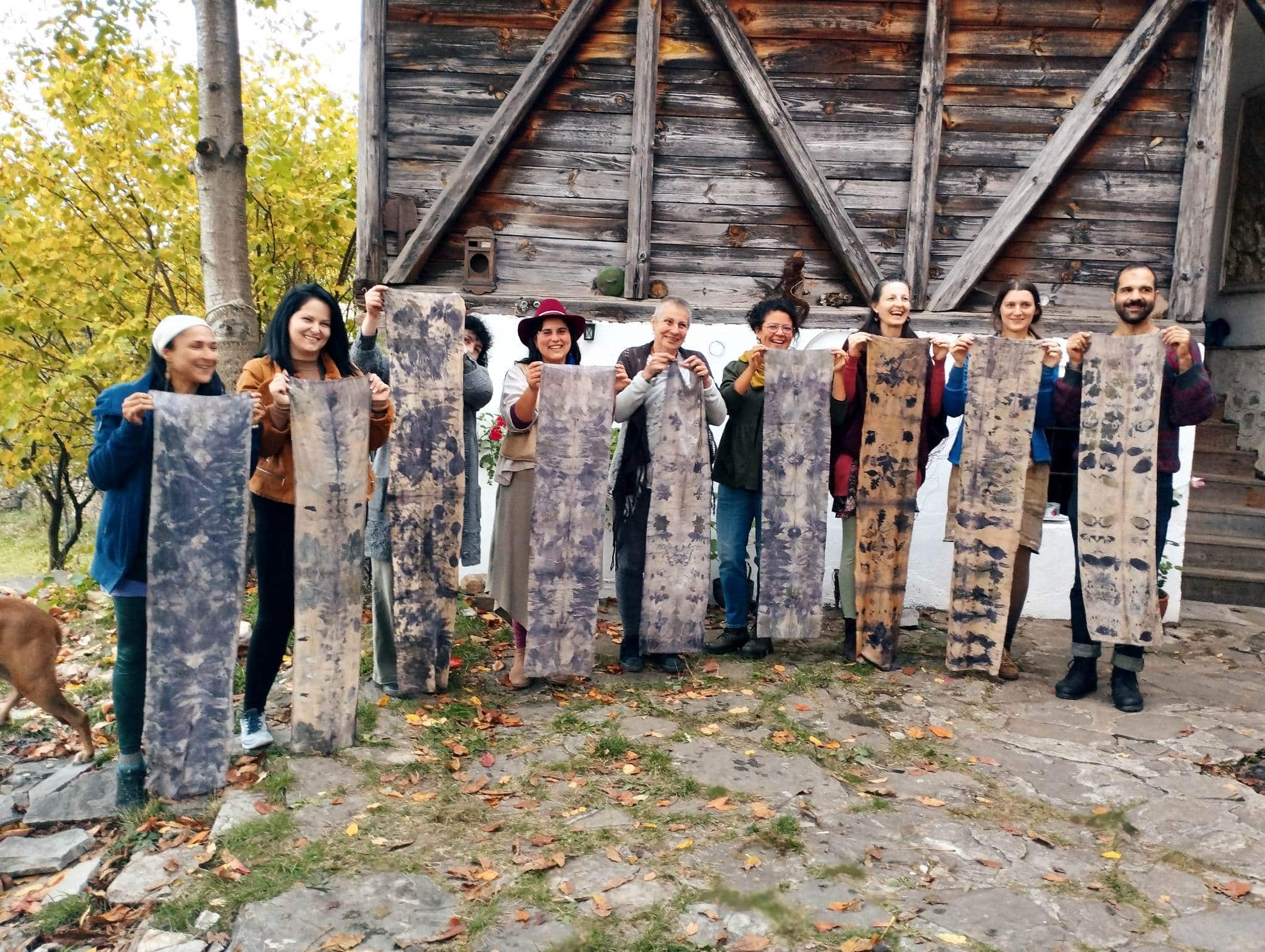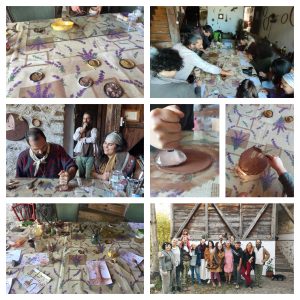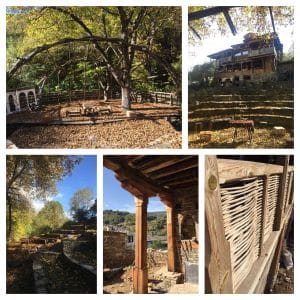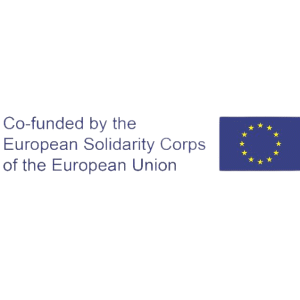Hello everyone!
It is me again with more updates about my time in Bulgaria. Last weekend at The Gates (Портите) we hosted an event with two workshops given by Nikolet and Radi on Ecoprinting (Saturday) and Natural Clay Pigments (Sunday). It all started on Friday when the participants arrived and met each other at the house for the weekend. On Saturday we started the day after breakfast with a walk in the forest to pick up some leaves and flowers that we could use for printing our cotton scarfs. On the way we learnt about some plants that contain more pigments than others. For example, blackberry and geranium, while others would not be so useful, it was a matter of exploration. Once we were back, Nikolet had already prepared the pieces of cloth by submerging them in iron water that would act as a fixator for the vegetal pigments. Afterwards, we proceeded to choose the plants we wanted to use for the printing and to decorate our scarf. We were told that it was better to put the material in half of the tissue, since we would need to fold it in half and then in half again to then roll it so that the leaves and flowers would be kept between the cloth and the pigments would imprint both sides. After placing them as we desired, we wetted the scarf with some apple vinegar and tied it with a rope before putting them to boil in water for one hour approximately. When the time passed, we took the rolls out and waited for it to be colder so we could open them. All of them were purple on the outside due to the mix of plants, but then when we opened them, we could appreciate the different results and we were gladly surprised at how all this went. Here you can see part of the process and the scarfs once we hung them to dry.
On Sunday it was the turn of the natural mineral pigments. Radi taught us about the theory of pigments and how they work with the binder agent so that it worked like a paint and we could work with them on paper. The base was different types of clay that they had previously collected and the first stage consisted of pulverizing them. It is a very important process for the clay particles to mix well with the binder. In this case, we use gum arabic, which is a resin of plant origin. This way, it would be much easier to apply the pigment and the paint would not dry as quickly. This paint remains water soluble and can be used as watercolor and, if stored properly, it can be used later. After the fabrication of two different clay pigments, we proceeded to try them out by painting and we also tried with some plant pigment to obtain some green colors.
It was a very intense weekend, full of activities and meeting very nice and inspiring people. Some had some previous experience of those techniques, so there was also a space for knowledge exchange and sharing some experiences.
We also visited and spent Saturday evening at the Amphitheater of Dolen, a beautiful place designed and created by the builder, woodcarver and musician Veselin Mitev “Vesko”, who is also a member of the Association of Building with Natural Materials, another branch of the Green School Village. This venue has been the scene of music festivals, workshops, seminars, film projections, gatherings and more. As can be seen in the pictures, the stage consists of a structure inspired by a design by Leonardo Da Vinci that is self-supporting. This project is managed along with Maria Koycheva, film production designer and graphic designer, and it started with the renovation of the house in 2006 and then the amphitheater, to be inaugurated in 2015. It is also remarkable the work of Vesko, as a carpenter and designer, as can be seen in their house and in some other work in the town.
That is all for the moment. I will keep updating you in the following days about my activities regarding some permaculture teaching materials, some projections about this place and more.
Hasta pronto!
Juliana





